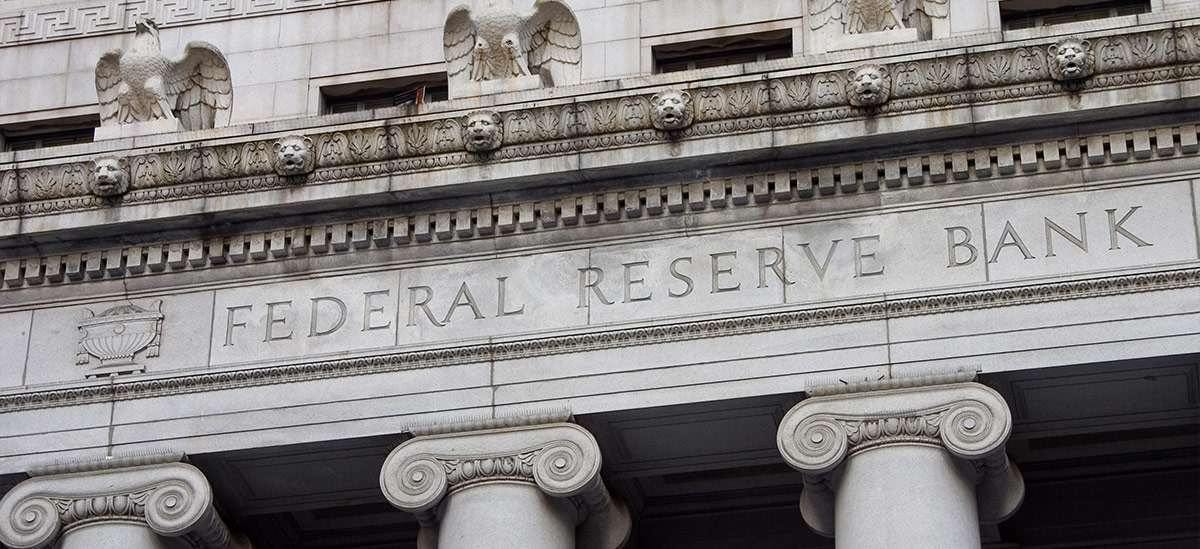
Whether you’re monitoring the performance of investments in the stock market or considering making a big purchase, chances are that you’ve got your mind on interest rates. But what determines interest rates and how does that influence monetary policy and consumer behavior?
Predicting interest rates long term would make everything easier. We could take a bit of the gamble out of investing in the stock market and always get the most advantageous rate on a home loan. While the world of perfect predictability isn’t reality, the Federal Reserve (Fed) does give the public a look at where short-term interest rates may be going in the form of a dot plot – you might just not know where to look.
If you pay attention to news on the economy you’ve likely read about the Federal Reserve (Fed) interest rate known as the federal funds rate. It’s different than the interest rate of your credit card, but has broad impact on the performance of the markets and consumer lending as well.
“When the Fed makes a move on interest rates, it can be difficult to understand how that impacts everyday consumers,” said PNC Chief Economist Gus Faucher. “But when banks pay more to borrow, those costs eventually get passed on to consumers in the form of higher rates on products like auto loans and credit cards.”
The Federal Funds Rate and Dot Plot
The federal funds rate is the interest rate at which banks lend their reserves to one another. The rate is determined by the Fed’s Federal Open Markets Committee (FOMC) – which meets eight times annually.
The Fed sets the rate based on a variety of factors including inflation and economic indicators on the labor market, consumer spending, and production. Those factors are considered by the seven members of the Fed’s Board of Governors and the heads of the 12 Regional Federal Reserve Banks. Collectively, they choose an interest rate that serves as a guide for financial institutions for their borrowing and lending, particularly shorter-term loans.
To accompany interest rate announcements, the Fed releases a quarterly dot plot to help illustrate how its interest rate policy is formed and as a guide to expected future rate activity. The graph is released as part of the Fed’s quarterly Summary of Economic Projections, known colloquially as the “dot plot.” Here’s how it works:
- Each of the 19 voting members of the FOMC (The seven board members and 12 regional heads) anonymously place a dot on a graph in which the X axis represents a point in time and the Y axis represents the target fed funds rate.
- Each dot represents that member’s opinion of where they think the fed funds rate should be at the given time period, given expected economic conditions.
- Each graph includes a plot for the expected fed funds rate at the end of the next few years (including the current one) as well as a “longer run” projection. (For instance, the dot plot for June 2024 would include projections for the end of 2024, 2025, 2026 and the “longer run.”)
It’s an exercise that has real influence outside of just an extra visual on a report. Many use the dot plots as a predictive tool – despite the Fed’s own caution against that. Interest rates affect corporate performance, investment decisions, and pricing of consumer financial products. Evaluating the dot plot can give a window to future policy decisions and guide consumers toward more informed investing and borrowing decisions. Imagine being able to predict when interest rates might rise and fall, and planning a home or auto purchase accordingly. The value of the predictions come with a caveat, though.
Predicting the unpredictable
While the dot plot will accurately reflect the interest rate position at the time of the release, the future projections can change significantly based on economic performance or geopolitical factors.
“It’s important to keep in mind that the dot plot is only a projection and can vary significantly from actual interest rate policy especially as it pertains to predicted future rates,” Faucher said. “A good example is pre-pandemic plots that predicted no immediate rate changes in 2020, when the reality of the situation eventually dictated that the Fed had to move rates to near-zero as a result of COVID-19.”
The aftermath of the COVID-19 pandemic is only one of several instances where the dot plots have incorrectly projected future interest rate policy. Federal Reserve Chairman Jerome Powell – in a June 2021 FOMC press conference – even went so far as to say that the “dots are not a great predictor of future rate moves overall,” and should be taken “with a big grain of salt.”
Trying for Transparency
So why publish the dot plot projections if they’re only accurate in the moment? The answer for the Fed is transparency. The dot plot first accompanied the interest rate policy decisions beginning in 2012 as the U.S. economy slowly emerged from the Great Recession – a time which saw rapid reduction of the federal funds rate to fight economic contraction. The graphs show the range of opinions that comprise the eventual decision-making.
“The exercise gives the public an eye to the process behind interest rate policy, and the diversity of views among FOMC participants” Faucher said. “Clearly, it’s impossible to predict what will happen in the economy and the world at large, but this provides a window into policymakers’ views, making the process more transparent and open.”
The perfect world of interest rate predictability isn’t a reality. But the Fed’s dot plot exercise can give a hint to longer-term policy direction – as long as you’re willing to proceed with caution.




